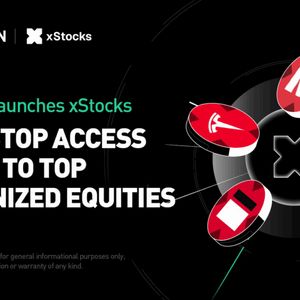SEC statement marks break from Gensler era on crypto staking
4 min read
In a pivotal shift for U.S. crypto policy, the Securities and Exchange Commission clarified on May 29 that most staking activities on proof-of-stake (PoS) blockchains do not constitute securities transactions—marking a major departure from the agency’s previously aggressive stance under former Chair Gary Gensler. The move, issued in a statement titled “Providing Security is not a ‘Security’,” alleviates legal uncertainty that had long stifled innovation and discouraged American participation in network staking. While the clarification is not a binding rule, it signals a more open regulatory posture under the current administration. It could also unlock significant growth in staking-related infrastructure, which is increasingly central to the operation and decentralization of modern blockchain networks. The SEC’s statement Hester Peirce, the Division of Corporation Finance and Commissioner, essentially captured the essence of the SEC’s approach by explaining that “certain proof-of-stake blockchain protocol ‘staking’ activities are not securities transactions within the scope of the federal securities laws.” Pierse clarifies that staking is a voluntary effort by users to secure a network, but the previous regulatory uncertainty has been discouraging for Americans. This “artificial constraint” harmed decentralization, censorship resistance, and, therefore, the credible neutrality of proof-of-stake-based blockchains. According to the Division of Corporation Finance, the statement applies to various groups of individuals and services, including those who stake assets individually or via the delegated-proof-of-stake platform, as well as staking-as-service providers, both custodial and non-custodial. Furthermore, the commission outlines in the statement that ancillary services associated with staking are not considered a securities offering. As an example of such ancillary services, the commission cites the provision of slashing coverage that returns staked crypto assets before the unbinding period ends, allowing the reward to be recalculated while maintaining the minimum amount of staked assets required for normal network operation. The statement follows the previously issued clarification noting that the SEC doesn’t apply securities offering laws to the mining of cryptocurrency. Generally, the clarification follows the logic of the commission’s other actions and statements made in the post-Gensler era, which began in 2025 when President Donald Trump directed his administration to loosen crypto sector regulation. Read more: Gary Gensler’s political testament. Digesting the SEC chairman’s exit interview One of the most notable differences was the abandonment of Gensler’s approach of labeling most cryptocurrencies as unregistered securities, a status that led to legal battles and, therefore, slower development in the sector. A yet unnoticed victory Crypto Council for Innovation was one of the first to emphasize the importance of the change in the staking status. In a series of X posts, the organization pointed out that the new legal status outlines staking “as a core part of how modern blockchains operate, not an investment contract.” Alison Mangiero, head of staking policy, thanked the SEC for recognizing staking’s real purpose as a tool that provides network security without being a security itself. 1/ Huge win for staking and the wider crypto community. @SECGov now recognizes staking as a core part of how modern blockchains operate, not an investment contract. 👏 @AMangiero @TeamPOSA pic.twitter.com/jTfPq4ihjX — Crypto Council for Innovation (@crypto_council) May 30, 2025 The shift in attention from wealth accumulation to the structural role of staking in PoS-based networks suggests that U.S. regulators are becoming more open-minded about the cryptocurrency sector. Interestingly, the clarification of staking status news was met with perplexity by many. In the comment sections of the news accounts, people asked if the news was bullish and, if so, why the prices weren’t going up. Some tried to deploy Grok AI to get the answers. One possible reason for such confusion is that Bitcoin and stablecoins largely dominated the 2025 crypto narrative, while proof-of-stake platforms were pushed out of the spotlight in crypto discussions. Ethereum, one of the leading proof-of-stake (PoS) ecosystems, has been under fire as the Ether price declined throughout the year. “Bitcoin, not crypto,” became a popular motto among many influencers on crypto X. However, staking hasn’t gone anywhere. The staking ratio (a percentage of the supply of the staked crypto to the rest of the circulating supply) continues to grow across various blockchains. The Block indicates that as of Dec. 31, 2024, Ethereum’s staking ratio reached 28%, while other key PoS-based blockchains (i.e., Solana, Cosmos, and Polkadot) saw staking ratios over 50%. It signifies a growing investor involvement in staking. Furthermore, the staking sector is undergoing a series of innovations. Mostly, they aim to provide stakers with more flexibility or unlocking liquidity while staking. It makes staking less demanding. Previously, it involved locking up crypto assets for a specified period, which could be unprofitable. The modern-day features help validators avoid missing out on profits while securing the network. The SEC’s clarification on staking may not carry the weight of formal legislation, but it represents a meaningful step toward deregulating the U.S. crypto landscape. While the news has yet to spark a surge in token prices or mainstream attention, it lays critical groundwork for future innovation. As staking continues to evolve—becoming more liquid, accessible, and central to blockchain infrastructure—the ability of U.S.-based users, developers, and service providers to participate without fear of legal ambiguity could catalyze a new wave of decentralization and growth. In short, the stakes have changed. Read more: Staking in crypto: The gateway or the trap? | Opinion

Source: crypto.news



